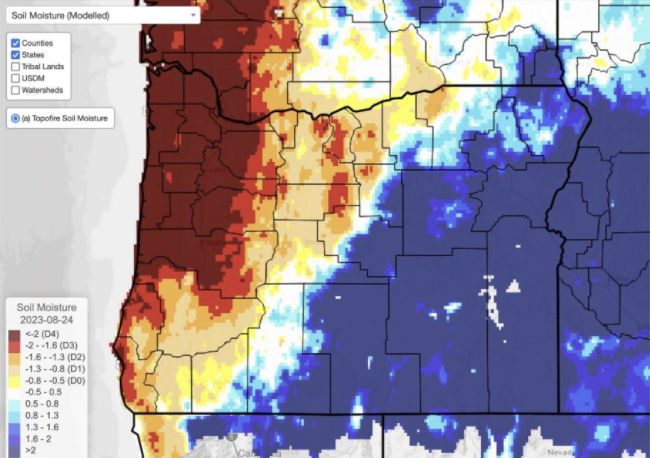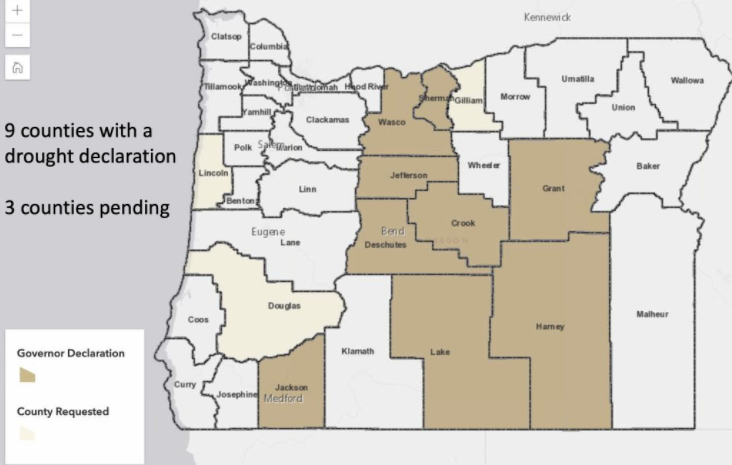CORVALLIS, OR -- According to the latest info from the U.S. Drought Monitor, southeast Oregon is the only portion of the state no longer under any drought designation. "We have nine counties that have a Governor-approved drought declaration at the state level. Most of these counties are located in Central Oregon, which has kind of been the epicenter of our current multi-year drought cycle going back to 2020," Director of the Oregon Climate Service Larry O'Neill said at a recent NW Drought and Climate Outlook presentation, "We’re starting to get more inquiries from counties about potentially having a drought declaration. So there are three pending right now, and I wouldn’t be surprised to see a few more coming." Lincoln, Douglas and Gilliam counties have pending requests.
O’Neill says there is a line splitting the state between northwest and southeast, with southeast Oregon considered either fully or partially recovered from drought, "They really took advantage of the atmospheric rivers that hit California during the wet season and then, they’ve also had quite a few thunderstorms and even the remnants of Hurricane Hilary have gone through. When it rained there it really poured." But several counties in western Oregon saw their driest May through July on record and evaporation is compounding the issue, "Oregon has some of the highest evaporative demand in the country, right now."
 In Central Oregon, O’Neill says surface soil moisture levels look pretty good, but deeper levels are still too dry, "So, it’s the top three-feet of soil, just about. And this often takes a couple of years to really replenish. So, our drought cycle, going back to 2000, really sucked out a lot of the moisture out of this deep soil column."
In Central Oregon, O’Neill says surface soil moisture levels look pretty good, but deeper levels are still too dry, "So, it’s the top three-feet of soil, just about. And this often takes a couple of years to really replenish. So, our drought cycle, going back to 2000, really sucked out a lot of the moisture out of this deep soil column."
Reservoir levels tell the same story, with eastern Oregeon basins at or above average, "But the problem areas of the state are a little surprising, given the snowpack. One of them is the Wickiup in Deschutes County, so right in the middle of Oregon. Wickiup is very low right now, so that’s at the headwaters of the Deschutes River, which flows north into the Columbia. This has caused a lot of problems with keeping streamflows and stream temperatures up in the Deschutes, and has led to curtailments of irrigation water and other associated impacts." The Willamette basin is especially troubling, he says, because those reservoirs are more reliant on rain, which hasn’t materialized, "One impact that we’ve noticed the last few weeks are streamflow temperatures are well above average - about four to eight degrees fahrenheit above average in the main-stem Willamette. And, these reservoirs have drafted down to such a point that there’s not enough cold water to keep the rivers at a cool enough temperature." He says that’s led to more blue-green algae blooms in the Willamette River and adverse effects on fish.
Images: (top) Nine counties have state drought declarations and three with pending requests.
(upper right) A map of soil moisture levels shows the divide between southeast and northwest Oregon.




